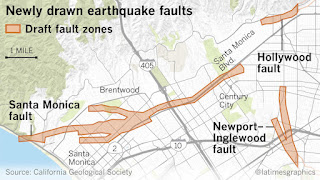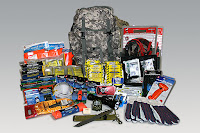Preparing your home for an earthquake – Get it done!
If you find yourself feeling tense about California’s San Andreas Fault, you’re not alone. The 3.6 magnitude earthquake that struck near Westwood Village earlier this month, followed by the devastating 7.1 earthquake in Mexico, has brought the issue of natural disasters closer to home for all of us. In a matter of seconds, one’s entire world can be turned upside-down, yet in just a matter of minutes, one can also take thoughtful actions to becoming the most quake-ready household on the block. Here are steps that you can take before an earthquake strikes.
One piece of uplifting information is that in recent years, Los Angeles and several other cities have required retrofitting of buildings that experts say are most vulnerable to collapsing in a major quake. It would be wise to take the same precautions by inquiring whether your home needs a retrofit—i.e. being bolted to the foundation so that it doesn’t slide off in an earthquake.
You can also consider earthquake insurance, which can give homeowners (and renters) the ability to have funds to repair their homes quickly after a massive disaster.
A simple action that you can do right now is go to your nearest hardware store and find the tools you need to strap or secure objects to the walls or floors that they rest on. Securing objects in and around the house will help limit property damage and reduce the risk of injury to you and your family. That means strapping bookshelves to the wall, televisions to their stands, and even microwaves onto the countertops. Don’t forget about your gas heater! You can also install safety latches on kitchen cabinets to keep blenders and plates from toppling on you during a quake.
Preventative Measures that can Save your Life
*Keep stored wine low to the ground—or in wooden boxes—as opposed to displayed up high.
*Affix a safety film to windows that will leave shattered glass in its place.
*Have a fire extinguisher (or two) on hand and keep them far away from the stove.
*Portable battery packs and emergency plug-in lights are extremely useful in an extended power outage.
*Keep the tank in your car three-quarters full as gas stations require power to pump gasoline.
*Don’t rely on data to navigate you around town post-quake…download maps of your city for reference now.
*Have cash on hand—ATMs won’t work without electricity.
*Tie a pair of sneakers together and store underneath your bed so that you can walk to safety after the earthquake.
Earthquake Kit
Lastly, experts highly suggest that each household prepare an earthquake kit. You can also make an additional kit to keep in your car and at your place of work for extra peace of mind. Place your stash on a shelf that’s easily accessible, and don’t forget about your pets! Pack food, water, medicine and anything else you’d need for at least 72 hours, but several weeks is a better bet. Key things to buy: canned proteins like fish (don’t forget the can opener), chicken or beans; canned fruit (which has sugar); and peanut butter. Don’t forget about replacing water jugs; they can degrade over time and leak.
During an Earthquake
If you find yourself experiencing an earthquake, take heed of this expert advice: Drop, Cover, and Hold On—always. Cover your head and neck with your hands and try to position yourself underneath a table to avoid being in a vulnerable position where something could fall and injure you. If you live near the shore, and severe shaking lasts 20 seconds or more, head to high ground in case a tsunami has been generated. Move inland two miles or to land that is 100 feet above sea level and don’t get in your car—start walking.
Source: Partners Trust Blog




